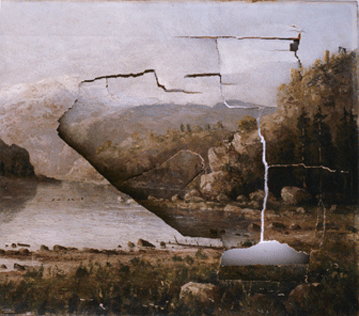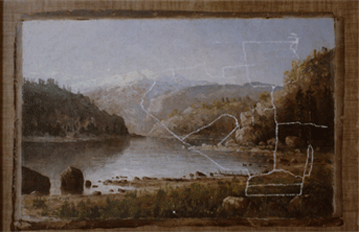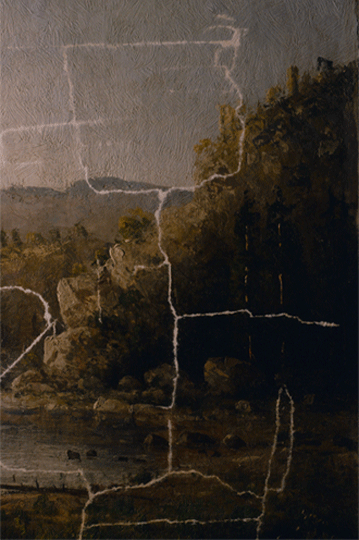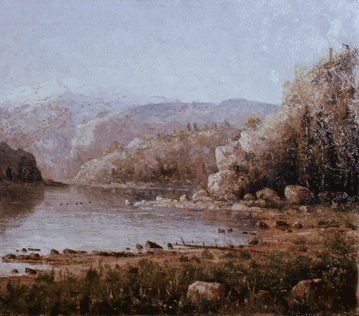A skilled and experienced conservator can repair damages that might seem irreversible, returning the artwork to display condition and preserving its integrity for generations to come.
What is Art Conservation?
Art Conservation consists of the restoration and preservation of works of art and cultural property. A professional conservator must conform to current standards for the preservation of the physical stability of the object and the original intent of the artist. This requires both extensive training and understanding of the specific needs of each artwork as a guide in the choice of materials and methods, as well as the important ability to use non-invasive and reversible means to prevent from damaging the original object. Conservation treatments are often time consuming. A quick and inexpert restoration job by non-professionals can cause substantial damage to artwork. Although problems caused by improper use of materials and inappropriate intervention can often be reversed, careful selection of a qualified conservator is particularly important.
View guidelines for selecting a conservator (AIC)
The most common damages to paintings are tears, punctures, buckled or rippled canvas, cracking, flaking and missing paint layer, discolored varnish, as well as accumulation of dust and grime. These are often caused by environmental conditions including improper handling and storage, as well as a result of an accident or natural disaster.
Common Painting Conservation Processes
Removal of previous restoration
Overpaint removal
Non-conservation material applied during a previous inexpert restoration, as an attempt to cover damage beyond the area of loss, may look alike from the surrounding area initially, but can age differently overtime. Removing this non-original paint layer can be a long and tedious process but necessary in order to reveal the original paint beneath without damaging it.
Removal of old lining
Sometimes it is necessary to replace an old lining such as wax lining, paste lining, etc when it has deteriorated and is no longer capable of supporting the paint layer.
Removal of patches
Some patches such as wax adhesive patch, paper or fabric patch (unlike monofilament fabric) that has
been used to repair tears in previous restoration attempt, can over time, distort the canvas and
appear as a bulge or plateau.
Surface cleaning
Paintings can become soiled and discolored with age. Air-borne agents such as smoke, dust, grime as
well as insect deposits, mold, etc. can accumulate over time and cause chemical and physical reactions
between the three layers (varnish, paint and ground).
Various solvent gels and mechanical techniques are used to remove the foreign material that distorts the artwork’s original color and appearance, while protecting the underlying paint layer.
Removal of discolored varnish and application of new varnish layer
A topcoat of natural resin varnish is often applied by the artist. This varnish can become darkened and
disintegrated. The old discolored varnish is reduced or removed and a non-yellowing synthetic polymer
varnish is applied to protect the painting from the environment and maintain its hues and clarity.
Application of varnish
Non-yellowing synthetic polymer (matte or gloss) varnish and other conservation varnishes that have
reversible characteristics can be applied to certain paintings in order to protect them from continual
exposure to environmental agents and ultraviolet light.
Flattening canvas distortions
A painting on canvas can become slack on its support, dented, buckled or rippled. This may lead to
cracking and flaking paint. Humidification treatment combined with light heat and pressure (in some
instances on the heated suction table) can safely relax and flatten the distortion of the canvas, restoring it
to its original plane.
Consolidation and stabilization of loose or flaking paint
Long-term effect of fluctuation in temperature and humidity, accidental impact or sometimes the
artist’s improper use of materials can cause the ground and/or paint layer to crack and lift away from
its support (canvas or other). The loose paint structure is consolidated and stabilized by introducing an
appropriate adhesive into the detached layers to prevent further losses. This type of treatment is often
performed on a heated suction table to enable penetration of the substance into minuscule cracks.
Compensation of losses in the paint layer and inpainting of missing pigment (retouching)
Excessive humidity or water damage as well as physical impact and mechanical stress can cause the
painting to suffer loss of paint and ground layer. Missing areas of paint are replaced with a reversible
compensating filling material and textured to match the surroundings. Then conservation quality
pigments and mediums are applied over the fill to restore the visual integrity of the artwork.
Mending holes, punctures or tears
Natural disaster or incidental impact can cause the canvas to be torn or punctured. A rupture in the
fabric support can be realigned, adhered or mended using re-weaving techniques and lining if
necessary.
Lining a painting to a new canvas support
When a painting is severely deteriorated or damaged it may be necessary to line the painting, a process
of adhering a stable support under the old canvas to provide added strength and durability. Before the
painting is lined, tears must be mended and distortions relaxed into plane. Additionally, an inter-layer
is added between the original and new support, providing ease of reversibility.
Attaching protective backing board
A backing board can prevent dust and airborne particles from accumulating on the reverse of the
painting and lessen the effects of fluctuations in temperature and humidity.
Click here for more information on art conservation from the Smithsonian Institute
 Specializing in the conservation of 19th century to contemporary paintings
Specializing in the conservation of 19th century to contemporary paintings



